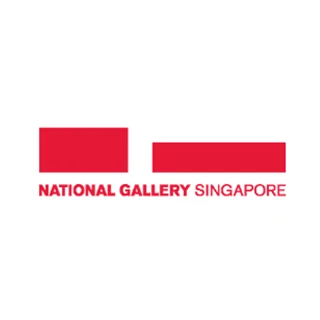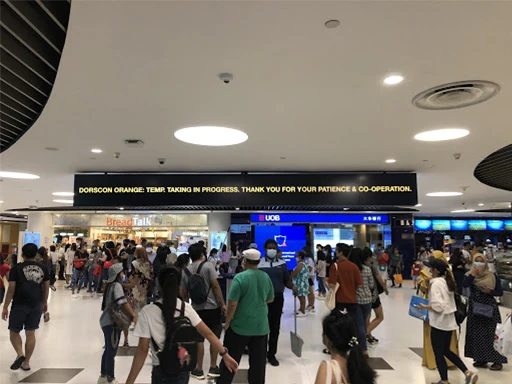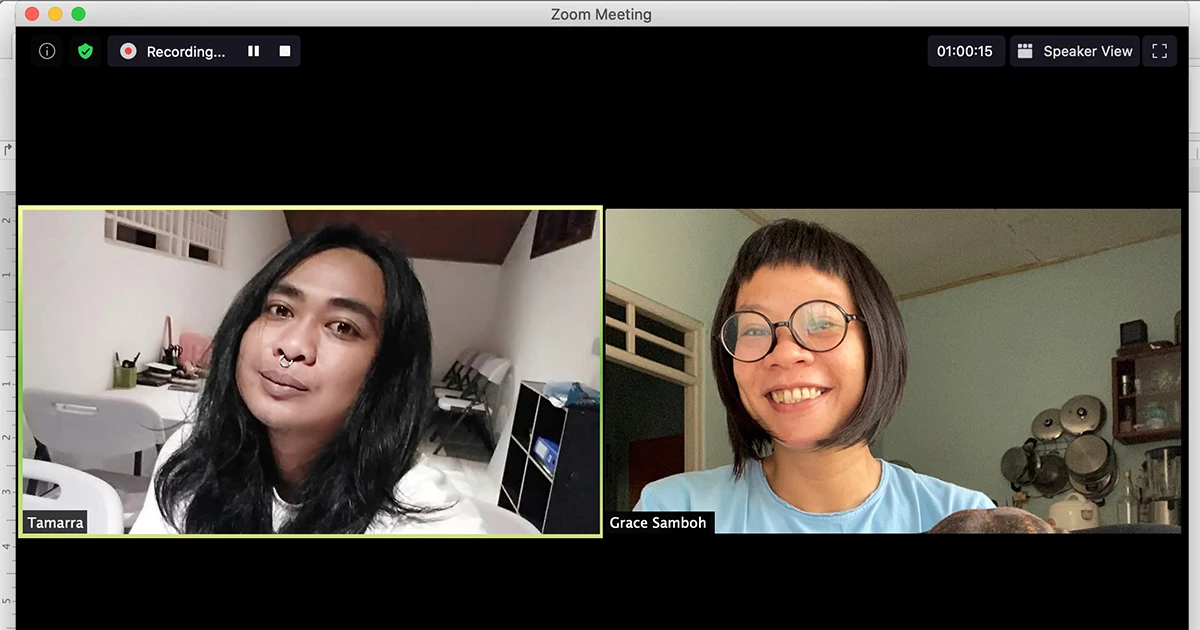out of isolation: artists respond to covid-19
Ho Rui An
out of isolation: artists respond to covid-19 is a special series of creative, critical and personal responses by artists on the significance of the coronavirus to their respective contexts, written as the crisis plays out before us. How does the ongoing crisis frame artistic labour and shape the way history is produced?
Ho Rui An postulates that if art were to show us a way out, it would first have to exit from its own bubble of contemporaneity.
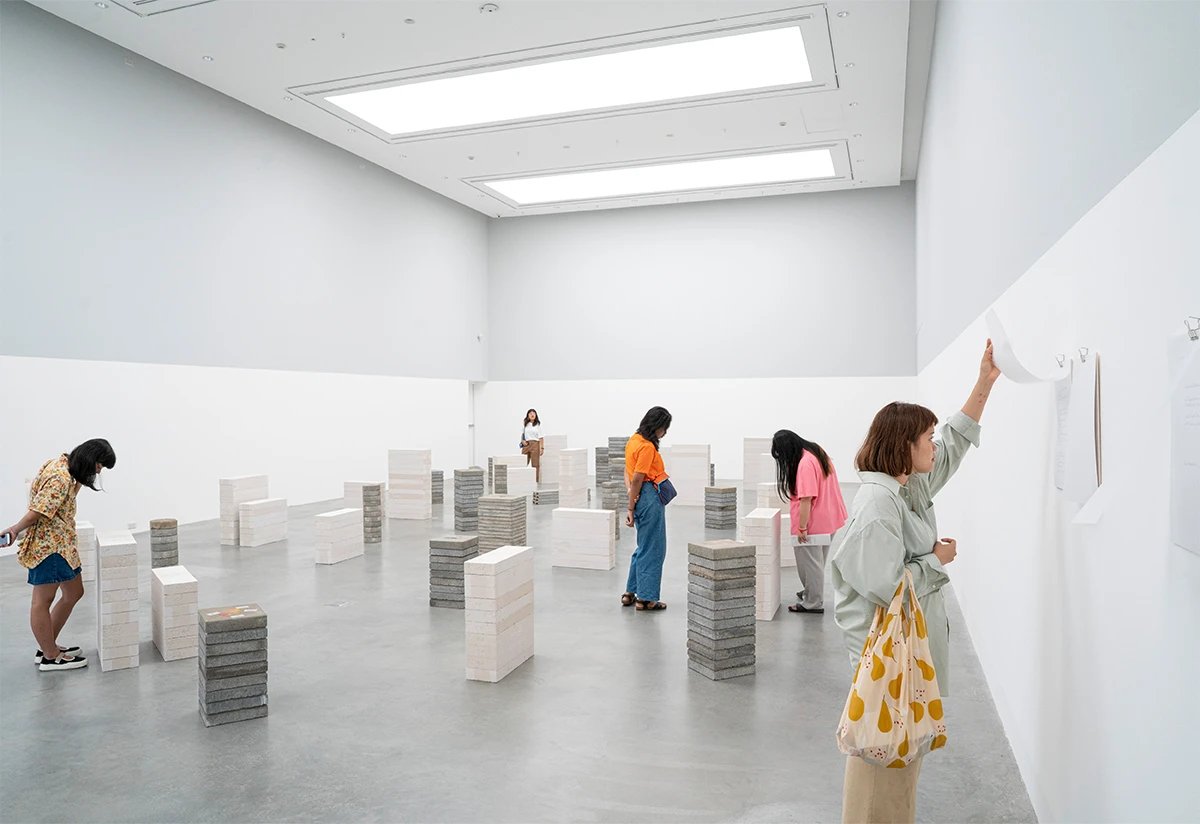
Image courtesy of Wolfgang Bellwinkel
As the world continues to grapple with the effects of the COVID-19 pandemic, many unique tensions, fears and doubts about the future have arisen. out of isolation: artists respond to covid-19 brings together artists' creative, critical and personal responses on the significance of the pandemic to their respective localities and contexts—what kinds of inequalities and injustices have the crisis laid bare, and what changes does the world need? If the origin of the virus is bound in an ecological web, what forms of climate action and mutual aid are necessary, now more than ever? Written as the crisis plays out before us, the series aims to spark conversation about how we might move forward from here.
How does the ongoing crisis frame artistic labour and shape the way history is produced? Ho Rui An postulates that if art were to show us a way out of this crisis, it would first have to exit from its own bubble of contemporaneity. Rui An is an artist and writer working in the intersections of contemporary art, cinema, performance and theory. He probes the shifting relations between image and power, focusing on the ways by which images are produced, circulated and disappear within context of globalism and governance.
Contemporaneity’s Bubble
Ho Rui An
When the celebrated international curator Hans Ulrich Obrist visited Singapore earlier in January, he stayed for no more than 24 hours. The occasion was S.E.A. Focus, the art fair and flagship event of Singapore Art Week and he was to deliver the keynote lecture. In those heady days at the start of the new decade, murmurs of a “mystery virus” emerging in Wuhan, China, were likely eclipsed by more pressing concerns. Wildfires were raging in Australia. An Iranian military general had been assassinated by a drone strike. The US-China trade war had no end in sight. The world, it seemed, was a mess.
Of course, none of these rumbles could dampen the art fair festivities. If anything loomed large in the minds of the international coterie who flew in for the week, it was whether this year’s edition of Art Basel Hong Kong would be cancelled because of the ongoing protests in the city. This cancellation would mean the loss not just of revenue for artists and gallerists, but also of a destination; for a contemporary art world that conceives of its historical progression as a ceaseless conveyance to the “next destination,” this borders on an existential threat. After all, travel in the contemporary art world isn’t just a form of mobility, it is also currency. No one exemplifies this more than Obrist, the monstrously productive and restlessly itinerant convenor of global projects famously known to travel for no less than 50 of the 52 weekends in a given year.1 That today we find him mostly on TikTok enquiring after the unrealised projects of animals in Hyde Park (where the Serpentine Galleries that he directs are based) tells us that we are living in truly strange times.2
In recent years, much has been said about contemporary art’s addiction to travel and its ecological implications. Last year, Art Basel even dedicated an entire panel to discussions on “The Carbon Footprint of Contemporary Art.”3 But never underestimate how readily contemporary art is able to marshall its powers of self-reflexivity in managing its cognitive dissonance. Irony, parody, hyperbole, farce and cool detachment are all in the playbook for a contemporary art that has spent a good part of its lifetime in the late capitalist museum reflecting on the “material conditions of its production.” Unfortunately, such reflection can only go so far in a time when the literal house of materiality is burning. Ecological critique that takes the form of massive, spectacle-driven installations, in particular, can only be consumed as tragicomedy simply on the count of the fossil fuels burnt to service the supply chains that support its very production and circulation.
In a recent online lecture series, Singaporean theatre director Ong Keng Sen reflected on contemporary art’s problematic relationship with air travel, referencing French choreographer Jérôme Bel’s vow to avoid air travel for his company’s projects.4 He noted that Bel had the luxury of making such a move only because of the international networks he had already established through years of air travel and that in most parts of the world outside Europe, alternative modes of transport on a regional scale are still far from viable. More importantly, Ong drew upon his experience managing the Flying Circus Project—a multidisciplinary platform that invites artists the world over to convene in and engage with specific localities within Asia—to foreground the necessity of moving artists into the localities for which they are producing commissions, in order to have a deeper sense of the lived realities of those communities.
Indeed, if the crisis of late capitalism, of which the ongoing pandemic is merely a symptom, calls for stronger international solidarity and worldmaking, such a new internationalism arguably requires even more embodied exchanges across borders, if only to offer an exit from the information bubbles of today that have allowed parochialism and bigotry to fester. In a manner that mirrors what Benedict Anderson observes in the transnational itineraries of the revolutionaries that would go on to lead successful nationalist movements during the late nineteenth to early twentieth centuries, travel allows one to experience every locality “simultaneously close up and from afar”, to read the local in the foreign and vice versa. This “spectre of comparisons” is also what accounted for the necessarily internationalist imaginary of postcolonial nationalisms.5
The pandemic has without doubt put paid to any such plans for travel, at least in the near future. But this cessation of movement, along with the heightened experience of time in lockdown, has led many, myself included, to reflect on what it means to sustain a contemporary practice that demands working across localities. During this period, I’ve been speaking to several friends who share this dilemma, one of whom is the Thai artist Orawan Arunrak, whose practice examines cross-border mobilities. Orawan grew up in Prachinburi and spent most of her early life travelling between Prachinburi and Bangkok onboard trains where her parents sold food and drinks. These days, she is based between Bangkok and Berlin, although her work often also takes her to countries in the region like Vietnam and Cambodia. Working mostly with drawing and text within an installation setting, she draws upon her exchanges with the many individuals she encounters as she moves between what she calls her various “temporary homes.” Sometimes, these individuals follow itineraries that parallel her own border crossings, be they a Vietnamese florist in Berlin, a German man ordained as a Thai Buddhist monk or a Thai woman with a love for speaking English who has moved to Bangkok from the provinces.
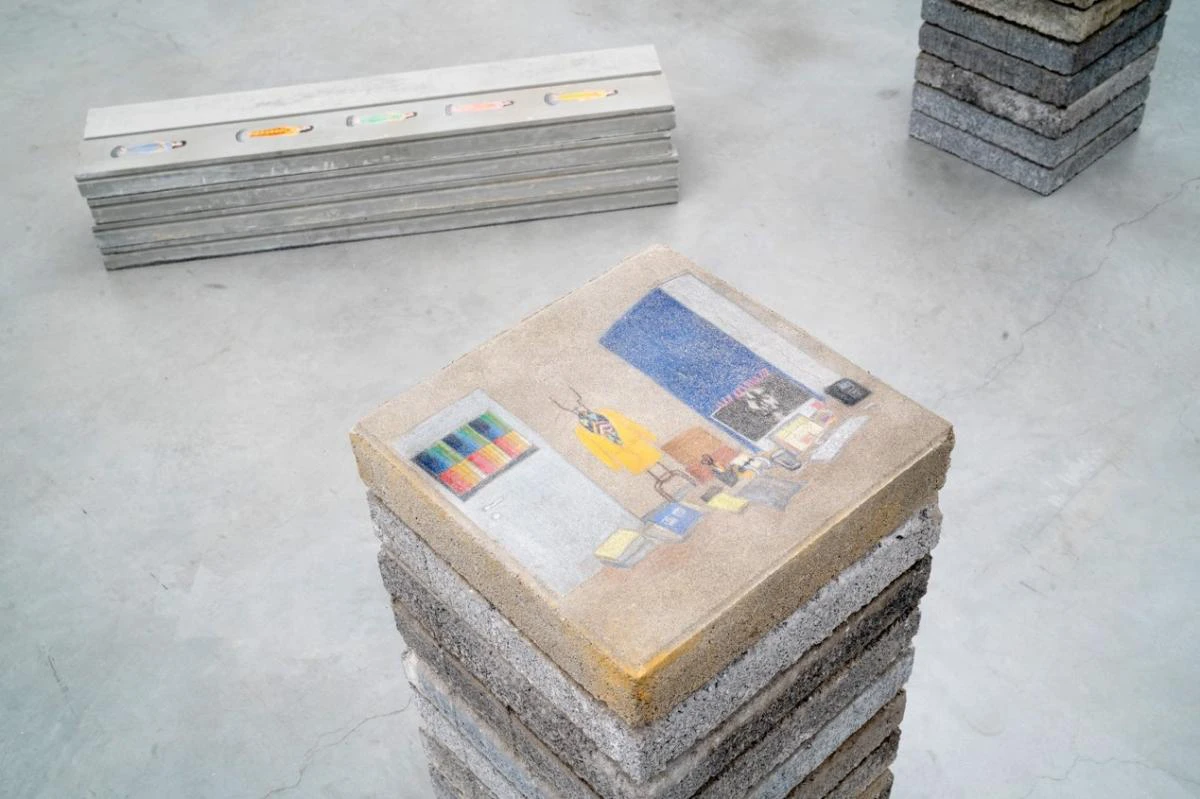
In an essay on her expansive installation COUNTING, I describe how time, as experienced in the work, “is not taken but spent, with none of the urgency of awaiting the returns on one’s investment.”6 We spend time engaging with the 21 stories in the installation, each inscribed as text and image on concrete slabs, just as Orawan has spent time dwelling within each locality, immersing herself in its rhythms and literally drawing out her encounters over time. If drawing, as John Berger claims, is a medium that encompasses time, time here is further distended, as the artist is unafraid to spend all the time it takes to draw on a surface as coarse as concrete.7 Taking time implies appropriation and by extension, that time is limited in supply. Travelling from one point to another, for one, is something that takes time insofar as it structures our experience of time as something to be measured and apportioned. In contrast, to spend time in a given place, especially after having travelled, is to experience time untethered from movement, so much so that time itself appears to expand in its very expenditure.
It seems that what’s crucial for Orawan is that spent time is not delimited by the urgency of production that is behind so many artist residences, where sometimes the pressure to produce is pegged to the desire to recoup the costs, both monetary and ecological, of travel, as if substituting artistic labour for carbon pricing. Rather, it is to be an act of temporal resistance, specifically one that reopens the “now” that contemporary art, in particular, has valorised as an eminently durable but hollow signifier for contemporaneity.
Of course, this is no place to rehearse tired arguments on what exactly is contemporary about contemporary art. Yet strangely, perhaps the structuring temporal paradox of contemporary art is uniquely able to speak to the present age of crisis, one where we have, time and again, been blasted out of the continuum of history and left suspended in a present that, for all its apparent contingency, requisitions from us a given set of responses so as to preserve the “now” as it is. As Suhail Malik suggests, the nowness that is ascribed to contemporary art is “distinct to the now of time because it is also the historicality of art.” The “near-tautology” that is contemporary art’s identification with the present does not mark a category of time. Instead, it serves to externalise time’s relentless progression as a holding site for testifying to contemporary art’s ability to continually surpass itself and yet at the same time remain recognisably “contemporary.”8
Nothing exemplifies this operation more than the contemporary art biennial. What is a biennial but a marker of time refigured as an exhibition of contemporary art? The ability of a biennial to repeat itself—some more consistently than others—is part of what endows the contemporary of contemporary art its enduring presence through history. This metastable structure allows contemporary art to endlessly re-preposition itself as art of the “now” while holding back the present’s corrosive termination of itself. From one edition to the next, the biennial opens an interval that allows us to distinguish between past presents and the present present, while framing this difference as original to a nowness that is always being postulated by contemporary art.
The globalisation of the biennial has accelerated this temporal spacing by harnessing geography as the spatial fix to the humdrum of calendrical time. Within this spatio-temporal dynamic, as important as the movement of the artwork is its ability to be parked, or temporarily fixed in space. This strictly time-limited sitedness, this holding of the now in its place “for now,” is what enables the ceaseless movements generative of the contemporary to finally take hold as “the kind of art we’re familiar enough with, a genre called contemporary art.”9 This is bienniality as banality, contemporaneity without the untimeliness of time, expunged from the tenseness of time into a shelter unto itself. This is contemporaneity’s bubble.
Crisis, like contemporary art, is a genre. And like contemporary art, it is conditioned by a temporal paradox: one that posits crisis as both a historical event to which we bear witness and an enduring, transcendental condition from which such acts of witnessing commence. On the one hand, there are “actual” crises like the ongoing pandemic or the 2008 global financial crisis, and on the other, there is the formal possibility of crisis that is held up each time we claim that “it would take a crisis” for historical change to happen. In other words, crisis is seen as both the thing that makes up history and the engine of the same history. Any act of witnessing crisis thus puts us only on one side of the paradox that takes crisis to be that which is empirically observed and acted upon and not the observation itself. As Janet Roitman argues, this turns crisis into a “non-locus” from which we regard a world understood to be already in crisis and a “self-authorising ground” for narratives on what accordingly has to be done.10 In crisis, we do not so much stand at the crossroads of history as produce history at the crossroads. And to the extent that the crisis is what brought us to this critical juncture to begin with, it also frames what we can do to make history as such.11
Consider the frequently repeated claim that the COVID-19 pandemic is the biggest crisis the world has faced in generations. Certainly, it is indisputable that the pandemic so far has resulted in the loss of hundreds of thousands of lives and even more livelihoods. However, what does it mean for us to stop everything we’ve been doing and collectively bear witness to the fallout of this particular pandemic, in a time when the ongoing climate emergency has also led to the loss or displacement of millions of lives and yet so little reckoning in comparison? It is telling that in last year’s National Day Rally speech where climate change featured as a main theme, Prime Minister Lee Hsien Loong described it not as a crisis, but a “challenge,” as he outlined the government’s strategies to “mitigate” and “adapt to” the new realities it presented.12 Compare this to the list of situations that he had explicitly identified as crises in speeches from preceding years: the 1997 Asian financial crisis, the 2003 SARS outbreak, the 2008 global financial crisis and diabetes. It goes to show that crisis does not have a stable referent but is instead that which is advanced to secure the grounds for observation, critique and ultimately, change.
Yet what exactly has changed since the beginning of this COVID-19 crisis? The answer is both everything and not very much. While the ways we live, work and space with each other have been changed dramatically, and some, irrevocably, earlier prognostications of a “suspension” of capitalism and with that, the opportunity to work towards a more ecological future, now seem hopelessly sanguine.13 In some countries that have lifted lockdown restrictions, “revenge” buying has set in while factories resume production at ramped up speeds to meet the spike in demand. The debt-financed stimulus packages that have been launched in most countries also mean that governments will be counting on future consumption booms to service their mounting debts.
If crisis produces historical change that marks the difference between the past and the present, it is apparent now that this is a difference that makes no difference. Indeed, this is how we might have best understood the declaration of a “global crisis” when the outbreak began spreading across the world in March. The designation of the crisis as such marked not simply a magnification of scale but a rearticulation of the stakes: what is in crisis is globality itself. Here, globality refers not to the international cooperation desperately required to tide us all through the pandemic and its economic and social ramifications, but the political project of reinscribing our planetary space to facilitate the circulation of goods, labour and capital in the global market. And to say that this project is in crisis is also to identify it as that which needs to be saved at all costs.
This is why when Singapore’s former foreign minister George Yeo recently pronounced that the future would be “globalisation with localisation,” we need to take this not as some long-awaited dialectical synthesis of the global and the local, but only the latest update to the global project.14 Supply chains may be rerouted through travel bubbles and domestic industries diversified, but ultimately the ones who will underwrite these changes are likely to be the workers, especially migrant and informal workers, who can be made readily available or redundant in response to the movements of capital.15 In effect, what the claim of a global crisis produces is the admission of the possibility that anything can happen to globalisation, except the end of globalisation itself, for that would entail the very loss of the site from which such an admission can even be made. If crises are often described as events that seem to come out of nowhere owing to blind spots of observation, here we see how crisis constitutes its own blind spot. In bursting our bubbles, crisis incorporates us into a bubble of its own making.
But if there’s a possibility that art can show us a way out of this bubble, it is only on the condition of its exit from its own bubble of contemporaneity. Instead of remaining enthralled by the nowness that only expropriates time’s relentless progression for itself, we need an art resolute enough to spend time without reserve, to share in the time of others and to explore the deep implication of our worlds in each other. Let’s travel not to park, but to dwell. It is unfortunate that inequality means that this is a privilege that only some can enjoy, as many of us realised during our time in lockdown. For all our fantasies of mobility during this period, it is repose, or the privilege of not having to move, that is the most sought-after luxury in a time of increasing precarity. For one, the ultimate luxury of air travel, it has to be said, lies not in its affordance of mobility per se, but of repose in mobility, a glass of champagne in hand.
Given this, any exit from contemporaneity must therefore interrogate the current conditions of globality where the present, like social surplus itself, is kept in lockdown. Short of a fundamental rethink and reorganisation of the rhythms of production and redistribution—a socialisation of time, if you like—we can only be left to dream within our own bubbles. In concrete terms, this might mean replacing quick-turnaround exhibitions with longitudinal research; running art spaces, first and foremost, as community spaces; expanding definitions of said community beyond the “local”; and, for artists, reserving our artistic labour for spaces willing to do this work. To put it bluntly, time is too important a resource to be wasted on the contemporary. Instead, let’s consider how a non-contemporary art might have a shot at transforming the present. Let’s consider how an art world made up of non-contemporaries across localities can build a new internationalism held together not by the standard time of globality, but the tendency to hang around for just a little while longer as we collectively work towards a better world.
Notes
- D.T. Max, “The Art of Conversation,” The New Yorker, December 8, 2014.
- Hans Ulrich Obrist (@huobrist), TikTok, https://www.tiktok.com/@huobrist.
- Art Basel, “The Carbon Footprint of Contemporary Art,” Youtube video, 60:05, June 2019, https://www.youtube.com/watch?v=VmL873GBBHo
- Ong Keng Sen, “Curating No-thing Lecture #3,” The Curators Academy (Singapore, May 26, 2020).
- Benedict Anderson, The Spectre of Comparisons: Nationalism, Southeast Asia, and the World (London: Verso, 1998), 2.
- Ho Rui An, “Migration Figures: Moving, Translating, Counting.,” in COUNTING, Bangkok: Bangkok CityCity Gallery, 2019.
- John Berger, "Drawn to that Moment," in John Berger: Selected Essays, ed. Geoff Dyer (London: Bloomsbury, 2001), 419–423.
- Suhail Malik, “Forever Young: A Short Guide to Some Paradoxes of Contemporary Art,” ArtReview, April 8, 2015.
- Ibid.
- Janet Roitman, Anti-crisis (Durham, NC: Duke University Press, 2014), 70.
- I’ve previously written about how this logical structure of crisis can be observed in the ways the Singapore state has sought to manage the successive crises of capital without undermining the logic of capital itself. See Ho Rui An, “Crisis and Contingency at the Dashboard,” e-flux journal 90 (April 2018).
- Lee Hsien Loong, “National Day Rally 2019” (Singapore, August 18, 2019).
- Yanis Varoufakis and David McWilliams, “‘There is a glimmer of hope’: economists on coronavirus and capitalism,” The Guardian, May 6, 2020.
- Neil Behrmann, “Post-pandemic future ‘will be globalisation with localisation’,” The Business Times, April 18, 2020. On the relationship between crisis and updates, see Wendy Hui Kyong Chun, Updating to Remain the Same: Habitual New Media (Cambridge, MA: MIT Press, 2016), 69-96.
- For a more detailed analysis, see Ho Rui An, “Technocratic Magic in the Contagion Economy,” e-flux journal 110 (June 2020).










